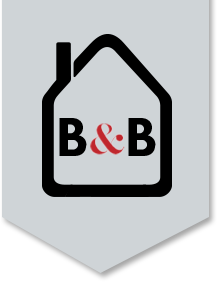What is a Carbon Footprint
What is a carbon footprint, how does it affect us, and what can you do to help?
What is a carbon footprint, how does it affect us, and what can you do to help?
What is sustainability? How does it affect me? What does it have to do with tiny living?
You’ve seen beautiful tiny houses on wheels on TV, in magazines, and on the internet. You could see yourself buying a tiny house one day. You could use it for vacations, put it in your backyard to use as a studio or guest house, or you could live in your tiny house full-time.

In this photo: The Hoosic Tiny House
But you may have asked yourself: if it’s on wheels, how does it really work? How do you get power to a tiny house? How do you get fresh water in and waste water out? How are tiny houses climate controlled? What expenses are you forgetting to include in your overall budget?
There’s a lot more to buying a tiny house than just buying the tiny house. You’ll need to have a good understanding of how it all works, and how you’ll deal with fresh water, waste water, power, and parking. There are many options for different types of tiny house setups. Before building, your builder will need to know how you plan to use your house so he or she can help you choose the best appliances and systems for your specific situation. Read about tiny house design sessions.
Because they’re on wheels, tiny houses can travel. However, life on the road isn’t for everyone: most tiny house dwellers live in one place with permanent utility connections.
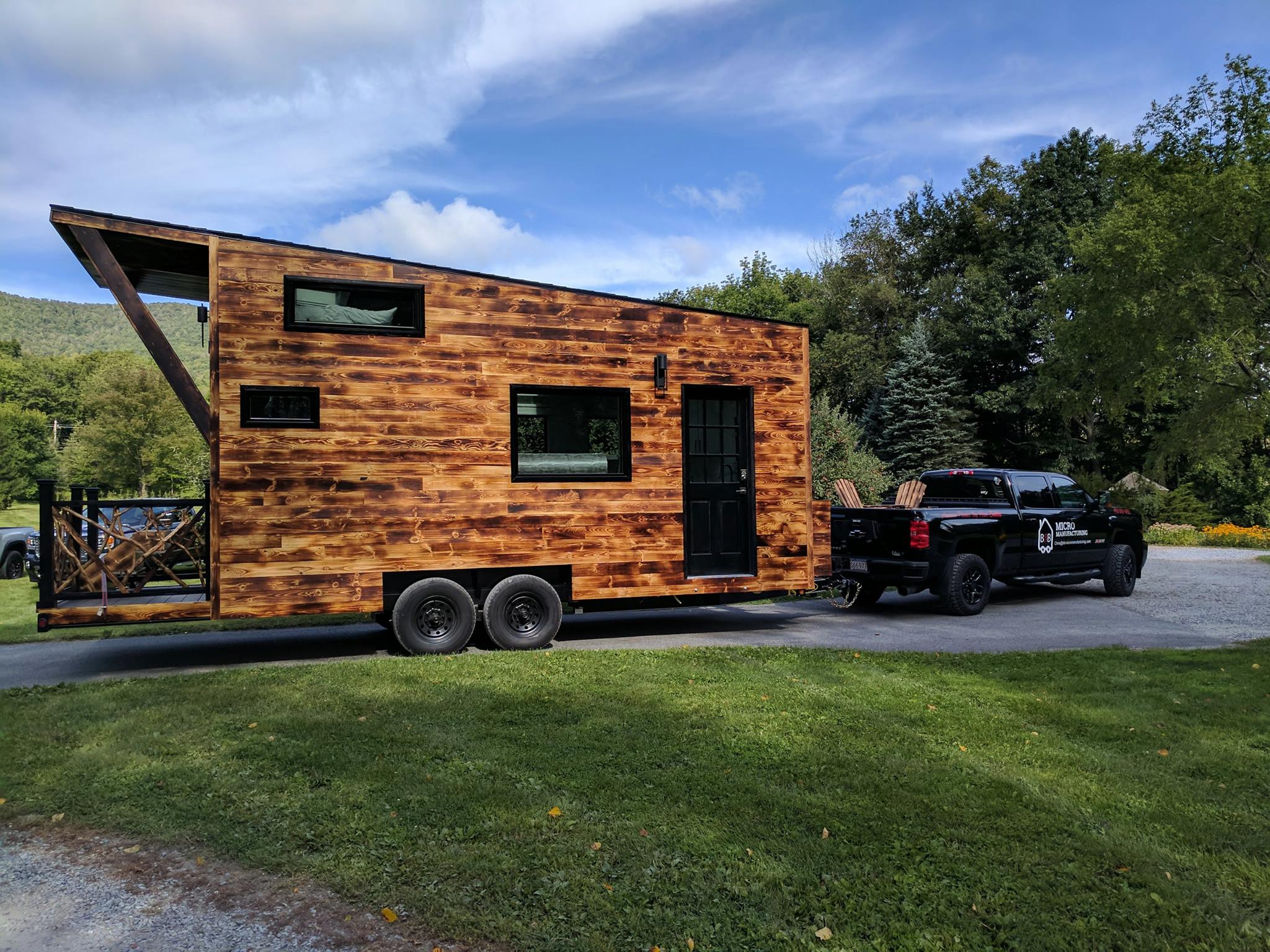 If you’re traveling with your tiny house:
If you’re traveling with your tiny house: If your tiny house will stay in one place:
If your tiny house will stay in one place:Most people place their tiny house on a gravel or concrete pad. This keeps utility lines in place and systems working properly (for example, some mini splits can leak if they’re not level).
Anchors are a great idea: they’ll keep your house from shaking even in the worst weather.
Skirting, while not necessary, also reduces shaking in high winds, and, if insulated, helps keep your pipes from freezing. Skirting creates a more permanent look to your tiny house.
If you don’t have a location for your tiny house yet, here are some things to consider when looking:
If you’ll be placing your tiny house in a backyard, here are some tips:
Photos in this section: The Arcadia Tiny House and the Spectacle Tiny House (a custom-built park model that’s not in our catalogue).
When people envision life on the road, they picture a life of freedom. But if you’re a human, you’ll still need water for life’s basics: drinking, cooking, and bathing.
For water, RV hookups come standard on B&B Tiny Houses. RV hookups have an inlet for a fresh water hose and an outlet for waste water. You can connect the hoses to a hookup pedestal at an RV park or, if your tiny house is in a backyard, to the main house.
Tiny houses on wheels have four potential spaces where water is used: kitchen sink, bathroom sink, shower or bath, and toilet. Depending on whether you’ll be traveling or staying put, and what systems are available at your location, we’ll help you decide on the best type of toilet for your lifestyle.
If you’re traveling, here’s how to hook up your tiny house at a campground:
Some tiny houses have water tanks and some don’t. If you’ll always be hooked up to a water system when you’re using water, you won’t need water tanks.
If your tiny house has water tanks, the tanks can store fresh and waste water until your house gets to a pumping station.
If you have water tanks, here’s a video on how to empty waste water (black water) tanks at a dumping station.
If your tiny house is staying in one place, you’ll want a more maintenance-free water system. Tiny houses on wheels can be hooked up permanently to the same systems traditional houses use: a well or city water for fresh water, and septic or sewer for waste water.
If your tiny house is in the back yard of a traditional house, you can hook your tiny house up to the existing water system, as long as it has the capacity to add another “bedroom”, which is code for “the water usage equivalent of one or two people being added to a house”. Generally, when houses are built, the water system permits the house to add at least one extra bathroom, in case the house gets an addition in the future.
Generally, we advise our customers not to DIY sewer connections, as there’s too much that can go wrong. However, we want you to have an understanding of how it’s done, so please watch the following video of how one DIYer connected his RV to the sewer.
Power is the second most important utility your tiny house will require. If it’s good weather outside, you can survive without using power, as if you’re going camping. But if you want to take a hot shower, operate lights and other electronics, and generally live like a modern human, you’ll need a constant source of power going to your tiny house.
 Most tiny houses on wheels come with RV hookups where you plug an extension cord with an adapter into the side of your house.
Most tiny houses on wheels come with RV hookups where you plug an extension cord with an adapter into the side of your house.
We hope this explanation of the many ways to set up your tiny house was helpful. In your design session, we’ll ask you to describe what your living situation will be and we’ll go over the best options for your specific situation.
Here’s an article that walks you through the 8 steps of buying a tiny house. When you’re ready to buy your tiny house, contact us to get started!
Thank you to YouTubersSean and Kristie Michael of Long Long Honeymoon, Mark Rowles, and BuckWSR for their instructional videos.
B&B Quality Construction builds homes and other buildings on-site with traditional construction techniques. They are available for projects within reasonable distance of North Adams, Massachusetts.
The Green River Small Home is currently under construction. Click to enlarge the construction photos below.
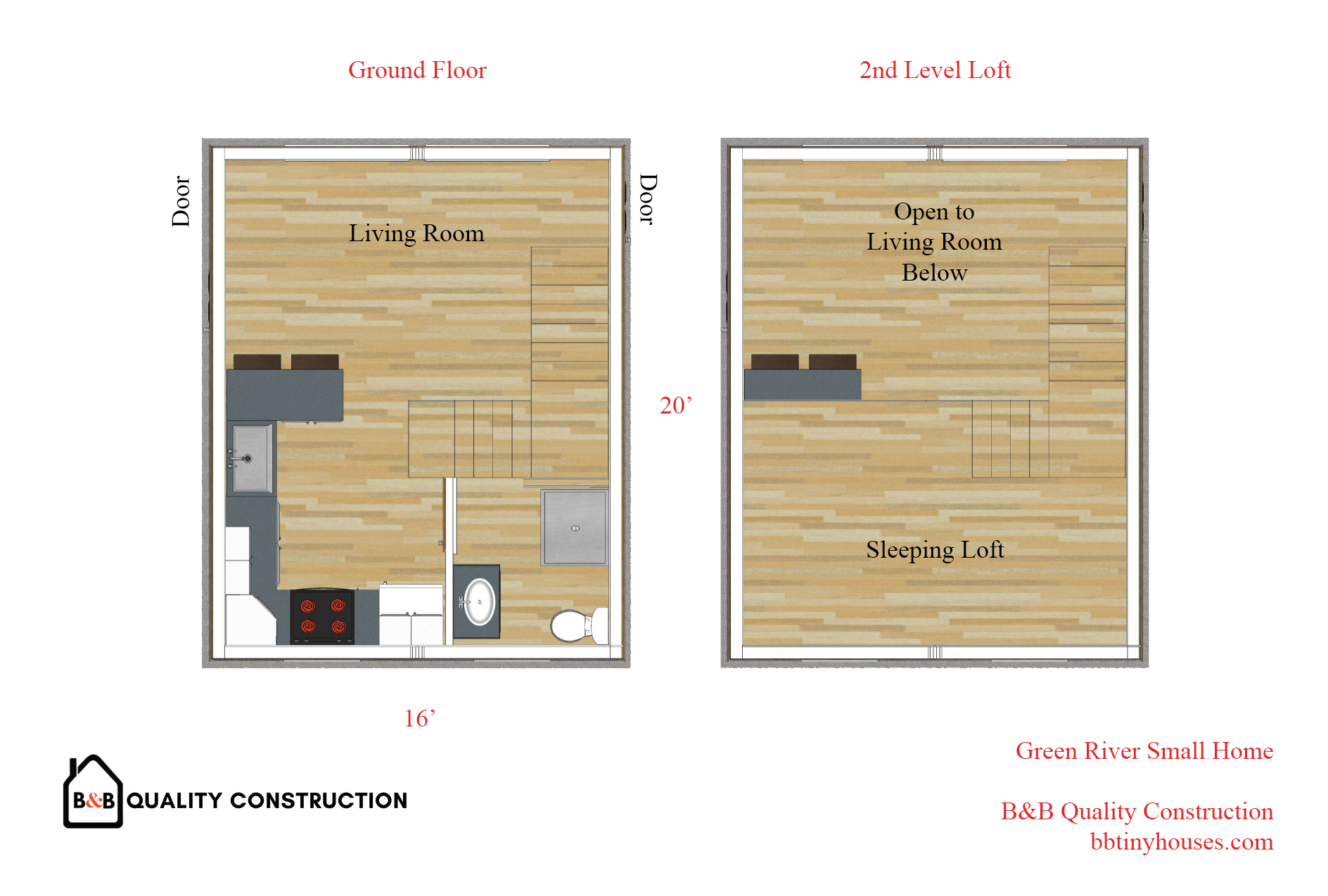
EDIT: Construction is now finished! Click here to see the finished photos and a video tour of the Green River Small House.
Interested in a small, permanently-affixed house like this near North Adams, MA? Contact us!
Off-grid living has been growing in popularity in recent years. There are different interpretations of what off-grid living is; however, generally, 0ff-grid living implies that where you live is not connected to the electrical grid. This means that people that live off-grid must use some form of renewable energy if they wish to have electricity. In addition, it usually means that they are not connected to the municipal water supply. Because of this, it’s apparent that off-grid living presents some challenging circumstances; however, becoming one step closer to being fully self-reliant is highly rewarding to some.
There are many reasons why people choose to live off-grid. It can be a great opportunity to try something new and disconnect–even if the city’s power goes out, you will still have power! In addition, over time you will save money on electricity bills; however, renewable energy, like solar panels, can have a high initial cost.
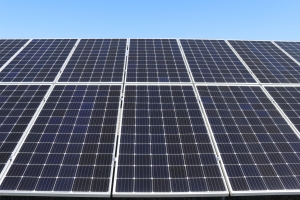
It is also worth mentioning some of the drawbacks of off-grid living. The upfront cost of solar panels and extra effort required to ensure that you are allowed to be off-grid on your land are important considerations.
Admittedly, there are different ways to live off-grid. When figuring out the right option, you should take into consideration how your tiny house will get power and water. You can use a generator or solar panels for power. For water, you either have the option of bringing the water to your property and holding it in tanks built into your tiny house or building a water collection tank from rainfall (this option isn’t likely to keep enough water on hand for typical consumption). Living off-grid is completely feasible in a tiny house; however, it requires additional planning. If you would like more information on off-grid living, send us a message through our contact page!
At B&B, all of our tiny houses are customizable to your preferences. That means that you get to pick all of the finishes in your tiny house. Check out some of our customers’ favorite features and add-ons below.
Solar panels can be fully installed on your tiny house for as little as $10,000. Grid-tied solar energy offers a great way to live sustainably and you even have the option of selling back excess electricity–a win-win!
Read our blog post on the two most common types of solar panels: off-grid and grid-tied.

Who doesn’t love shiplap? At B&B, we offer shiplap bare, painted, or stained. You also have the option of having the shiplap on the ceiling.

Shou sugi ban is as practical as it is functional. Originating from Japan, shou sugi ban weatherproofs the exterior of a house through charring the panelling of a house. The result is a beautiful, contemporary house. Shou sugi ban can come in a range of colors from lightly charred to completely black.

Sleep up to two more people in your tiny house through a convertible futon sofa.

If you know that you will be keeping your tiny house in a single location, then an expanded porch is a great way to even better enjoy your surroundings. Also, they are great for entertaining!

Living tiny doesn’t mean that you have to sacrifice a full-sized refrigerator.
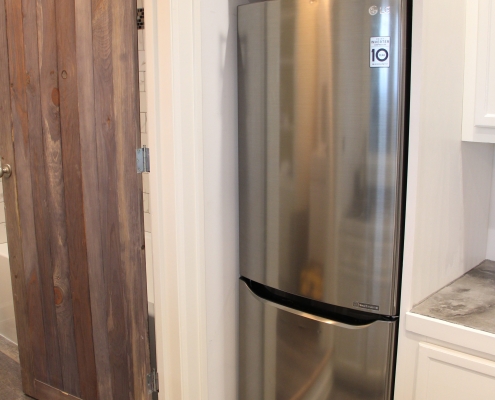
We’ve built a Tiny Smart Home using tech from Resideo, Honeywell‘s new spinoff which goes public today.
The Tiny Smart Home is right outside the New York Stock Exchange where Resideo rang the bell this morning, showing off Resideo’s smart home technology.
“As Resideo rings in a new era as an independent company and begins trading on the New York Stock Exchange, the company is hosting a pop-up experience outside the iconic Financial District landmark to display its top-notch, easy-to-use solutions. The mobile technology showcase is the brain child of Resideo and news-outlet Cheddar, who are joining forces to highlight the intersection between smart home technology and simple living. The Resideo Tiny Home, built by B + B Tiny Houses, serves as the backdrop of a new Cheddar show, which will launch later in 2018 and highlight Honeywell Home’s end-to-end, integrated home solutions on the exterior, on the wall, in the wall and in the cloud.
The 125 square-foot home features Honeywell Home’s professionally installed options, which were slightly modified for the small space, and are available through professional HVAC contractors and home automation and security dealers (through Resideo’s ADI Global Distribution business). The home also includes DIY solutions found at major retailers and www.Honeywellhome.com. The solutions are controlled via simple voice commands or Honeywell Home apps, make the home smarter, cozier, safer, and more efficient.” –resideo.com
If you’re near Wall Street check out our Tiny Smart Home with Resideo technology! If you’re not near Wall Street, this tiny house will soon be traveling the nation– keep up to date on its whereabouts on Residso’s Twitter or Facebook!
Click the images to enlarge:
Learn More about “The Tiny Home On Wall Street” in this article by Resideo.
Watch the video of B&B co-founder Jason’s interview about Building The Smart Tiny Home on Cheddar TV.
Many tiny home owners chose to adopt the minimalist lifestyle in order to live more sustainably. Solar panels offer a great form of renewable energy, but there are many considerations that you will need to keep in mind before you decide if solar power is the right option for you. In this post, we will talk about the differences between grid-tied and off-grid solar power.
As the name suggests, grid-tied solar systems connect to a utility power grid.
Pros
– Net metering: Net metering is when excess energy created by your solar panels is sent to the utility power grid for others to use. This allows solar panel owners to be paid for the excess electricity that their panels create.
– On-grid Connectivity: If the solar panels do not create enough power for your tiny home, then the electrical grid will give electricity to your home as needed. This can allow a tiny home owner to buy solar panels in phases and increase the amount of panels their home relies on whenever the owner pleases.
– Affordability: Grid-tied solar power is the cheapest option for solar energy.
Cons
– Lack of Transportability: Many tiny home owners like to frequently move around with their tiny house. Because of this, a grid-tied system would not be the ideal choice because they might not have access to an electrical meter while on the move.
Off-grid systems are able to move with tiny home owners as they travel. Off-grid systems work by converting sunlight to power during the day and then storing this power in batteries for future use.
Pros
– Transportability: With this option, you are able to travel with your tiny home and have a source of power.
– On-grid connect-ability: There are off-grid options that can also connect to the grid, which enables tiny home owners to not have to worry about not having electricity and allows owners to sell back surplus electricity.
Cons
– Price: Compared to grid-tied systems, off-grid systems cost more money. In order to prevent a lack of power, most off-grid systems are oversized to make sure that there are no outages; this usually takes into consideration 1-2 days without solar panel generation.
– Lack of Electricity: Solar panels may not produce enough electricity due to weather or because your tiny home is using more power than predicted. As discussed above, this is why most off-grid systems are oversized. Tiny home owners do have the option of charging the batteries via a generator if there is not enough solar power produced.
Depending on how you are wanting to use your tiny home and budget will probably be most tiny home owners’ biggest considerations when deciding which solar system to opt for.
Learn more about our process or fill out the form below and one of our tiny house experts will reach out to you.
